Lining the walls of the expansive Great Park Gallery are delightful sketches, drawings and paintings, many in cartoon colors, of memorable Looney Tunes characters including Bugs Bunny, Wile E. Coyote, Daffy Duck and Porky Pig; as the exhibition “Chuck Jones: Season of Creativity” provides an extensive description of animation created by the Warner Brothers studio.
This show is also rich in wall text, describing in detail the many steps involved in creating animated films from 1930 to 1970. And as the installation further demonstrates, Chuck Jones (1912-2002), producer/director of more than 300 short and feature-length films, had a profound influence on pop culture, as seen through the lens of anthropomorphized animals.
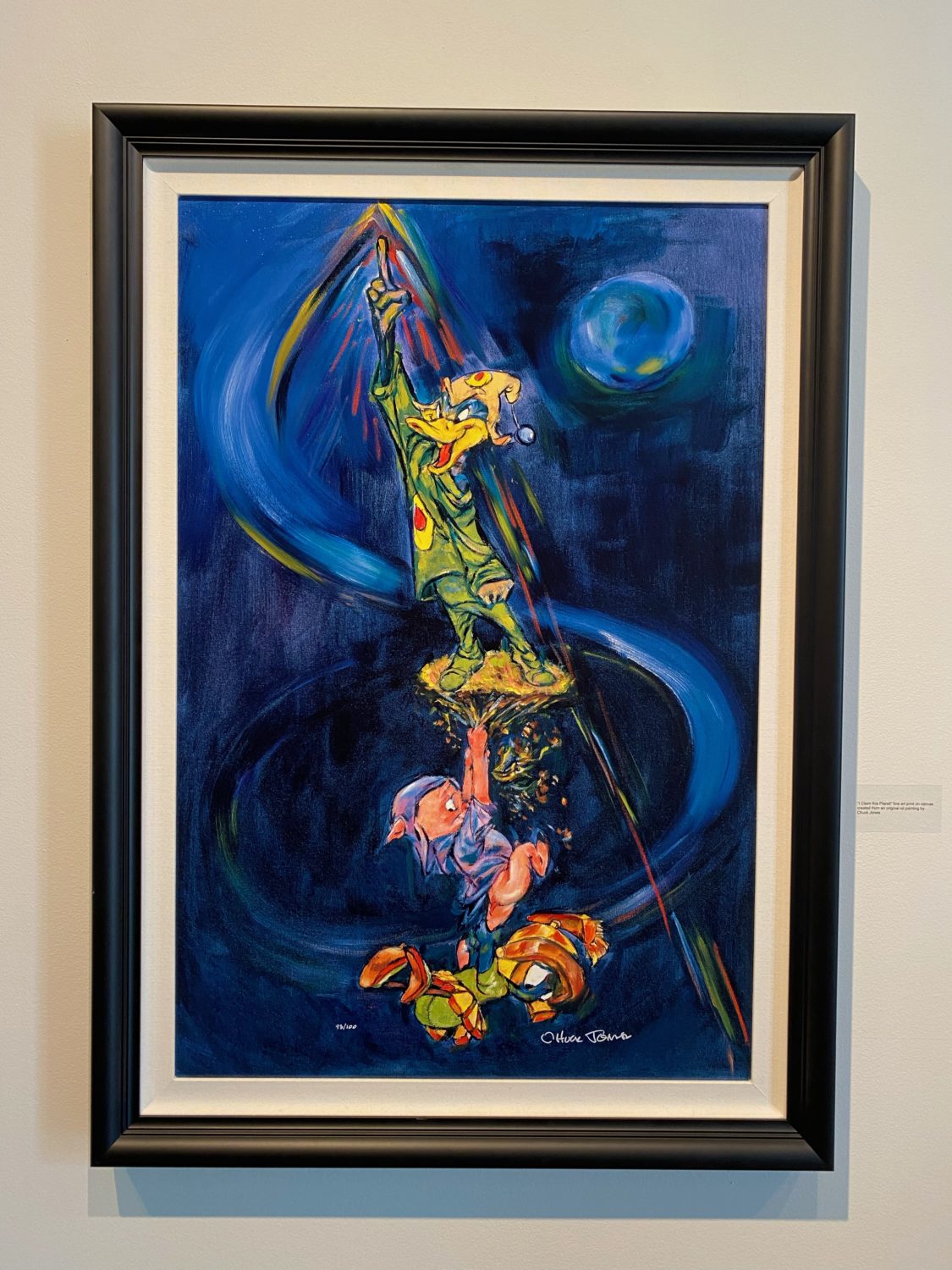
“I Claim this Planet” fine art print on canvas created from an original oil painting by Chuck Jones.
Jones is described in this show as a Renaissance man, superlative filmmaker, writer, fine artist, lecturer and philosopher. He is quoted in a wall label: “The rules are simple. Take your work, but never yourself, seriously. Pour in the love and whatever skill you have, and it will come out.” This quote is accompanied by framed versions of his whimsical free-hand drawings of cartoon characters, along with another quote explaining that the cartoon characters “spring from the imagination of the producers, directors and animators.”
Early in the exhibition, visitors are introduced to seven of Chuck Jones’s paintings. These delightful artworks, depicting Looney Tunes characters, demonstrate the animator’s expertise as a fine artist. Indeed, the world-famous Oscar-winning animator was a painter before becoming a cartoonist, having graduated from Chouinard Art Institute.
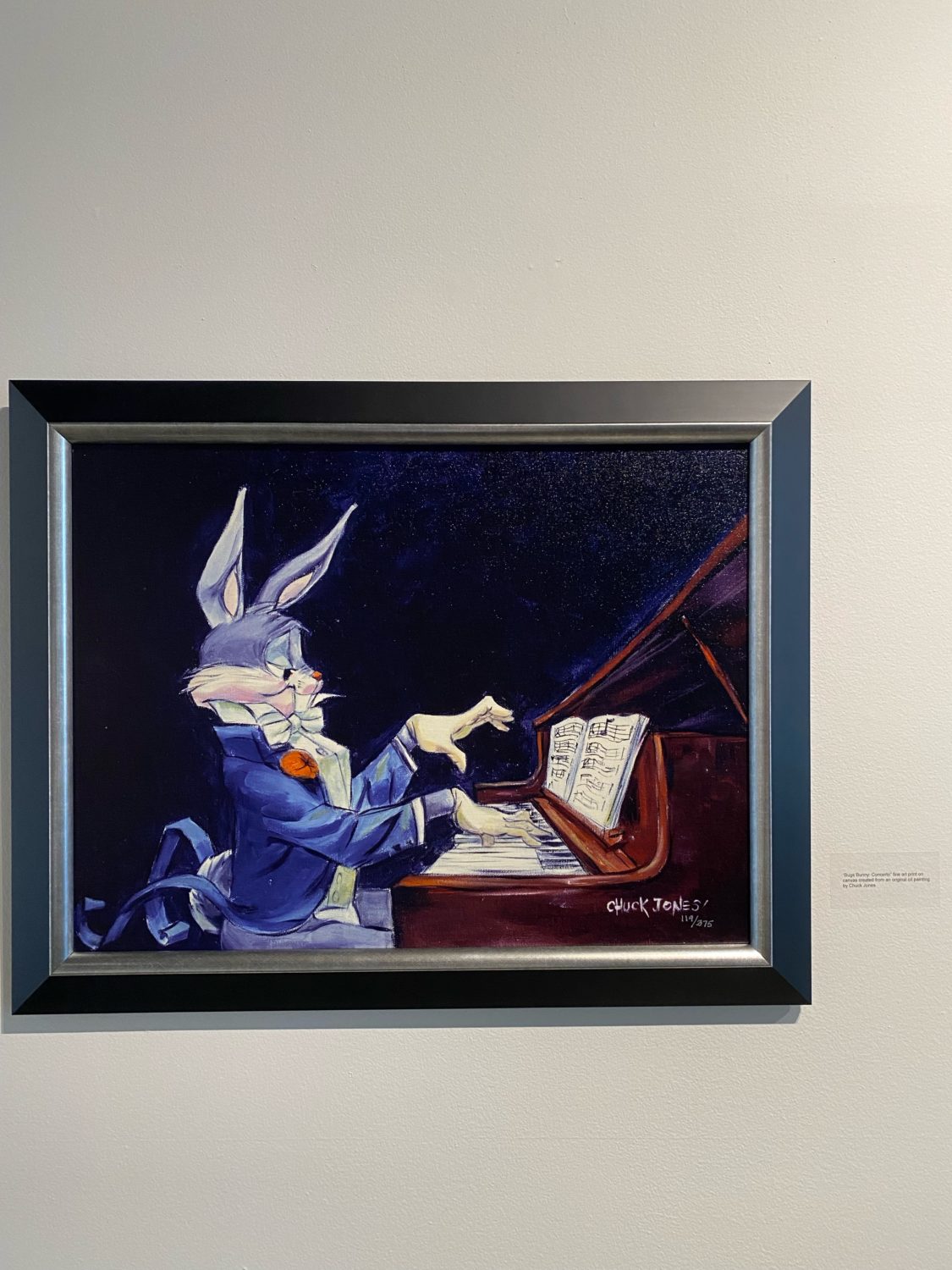
“Bugs Bunny Concerto” fine art print on canvas created from an original oil painting by Chuck Jones.
His colorful paintings are primarily figurative renditions of well-known cartoons. On display are “Bugs Bunny Concerto” of the formally dressed rabbit playing a classical composition at the piano; and Porky Pig as Friar Tuck, laughing at Daffy Duck portraying Robin Hood in “It is to Laugh.” In the painting “I Claim this Planet,” Daffy Duck is standing on a small platform with his hand raised toward the sky, while Porky Pig and Marvin the Martian are holding onto the platform by their fingertips. In “Lights, Camera, Action,” Bugs Bunny, Daffy Duck, the Road Runner and Wile E. Coyote whimsically portray a scene from the silent filmmaking days. And Lola Bunny makes a romantic appearance with Bugs in “Love is in the Hare.” Jones’s contrasting “Van Gogh Coyote” painting is executed in an expressive Van Gogh-inspired style.
While these artworks were created after the invention of the Looney Tunes characters, they demonstrate Jones’s lifelong expertise with color, form and harmony – skills that he employed during his 70-year career as a cartoonist.
Exhibiting/describing Jones’s expertise and detailed methods used as an animator might seem a daunting task. Yet “Season of Creativity,” three years in the making, is the most comprehensive display of his creative output, according to the curators.
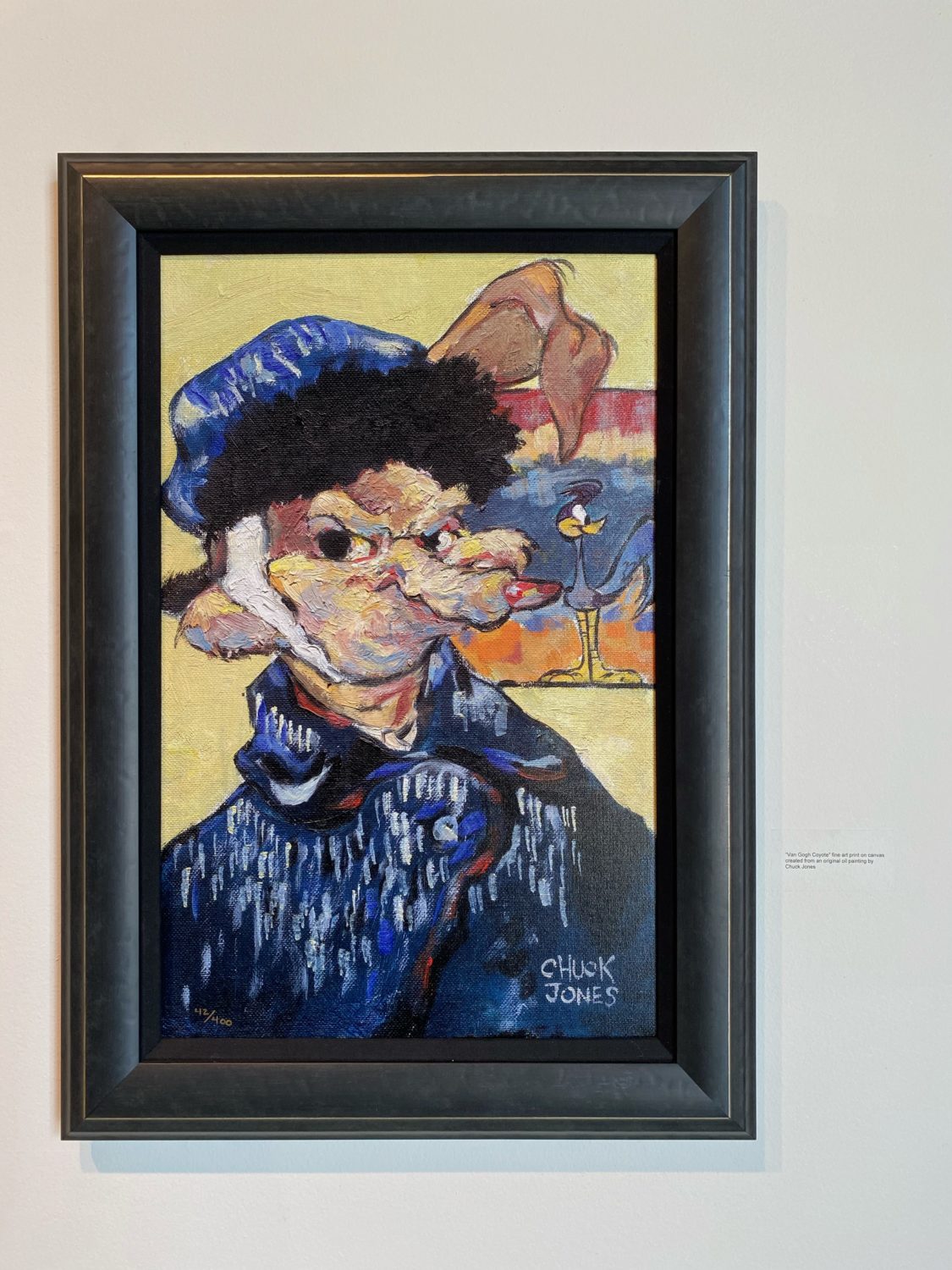
“Van Gogh Coyote” fine art print on canvas created from an original oil painting by Chuck Jones.
Each of the following cartoon-making steps is lavishly described in pictures and words. One of the earliest steps, as the exhibition explains, is character design. This process often begins with the drawing of an animal; then there is the anthropomorphizing of that animal, and finally the illustration of its range of motion in successive drawings.
Storyboards illustrating cartoons in sketch forms are then described in images and in the following text: “Every crucial scene is drawn in semi-detail form on cards and pinned in sequence on a board to allow the director to visualize the finished cartoon.”
The next step, creating the cartoon script for the voice actors, is similar to writing a film script. Jones is again quoted: “Once you have heard a strange audience burst into laughter at a film you directed, you realize what the word joy is all about.” Scriptwriting is followed by the painting of the colorful and illustrative backgrounds for the cartoons. These scenes – often depicting the outdoors – are painted by traditional artists. The exhibition text explains, “The backgrounds are designed to allow the animated characters plenty of movement and must not distract from the main characters.”

“Love is in the Hare” fine art print on canvas created from an original oil painting by Chuck Jones.
The “Animation Process,” following the background painting, was one of the most complicated and essential steps, as a new drawing was created for each individual movement of every character – with many different drawings needed for each second of movement. (These animated films were made long before the digital age.)
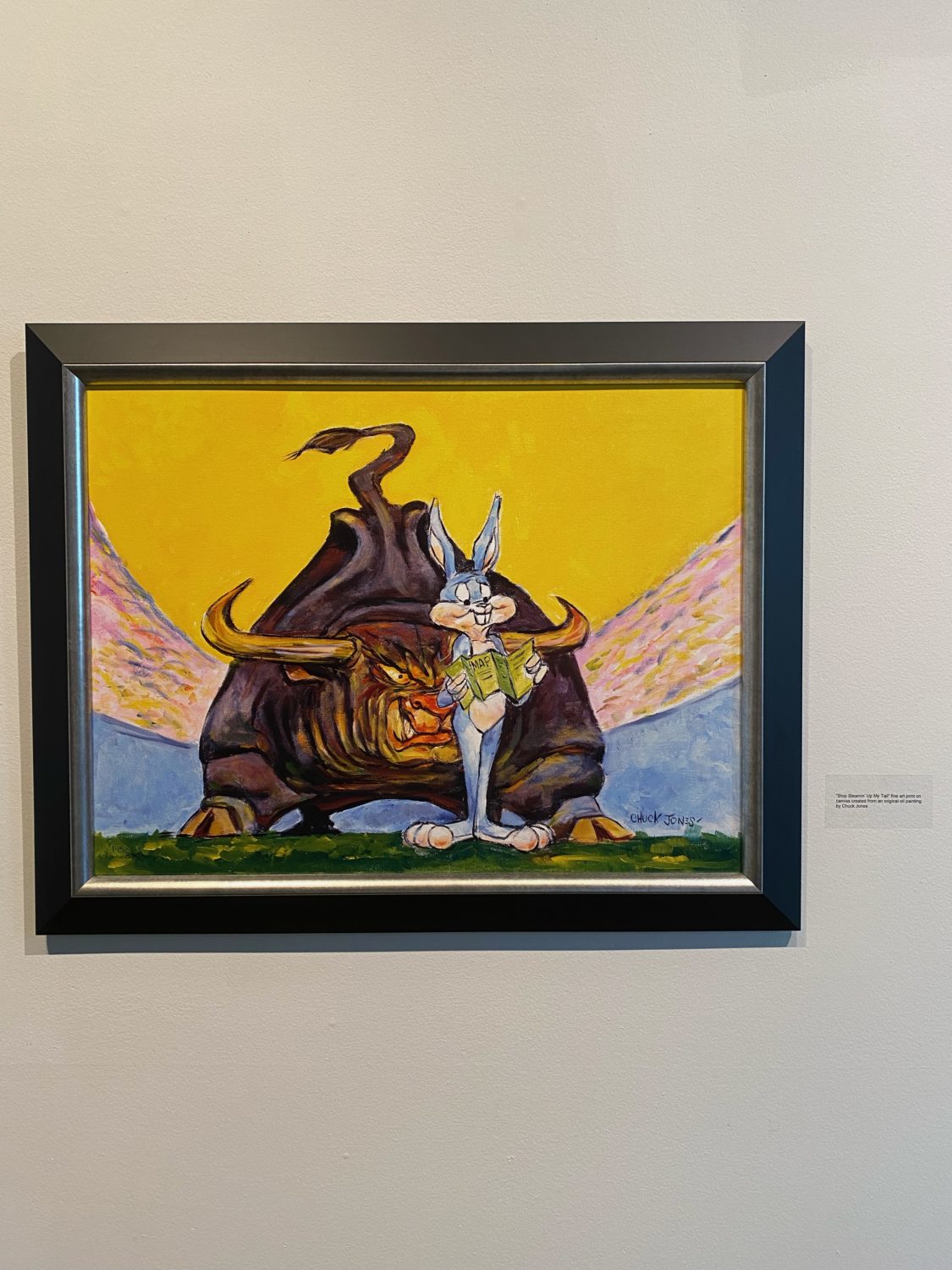
“Stop Steamin Up My Tail” fine art print on canvas created from an original oil painting by Chuck Jones.
One of the last steps in cartoon making in the 20th century was “Inking and Painting,” or transferring the animation drawings onto translucent plastic sheets. Until the 1960s, this time-consuming process was accomplished by hand, but was simplified when the Xerox company developed a method to photograph and chemically transfer the drawings onto celluloid film, or onto “cels” as the film was referred to back then. The final steps, placing the cels on top of their backgrounds under the camera, resulted in the now-iconic Chuck Jones films that so many of us saw and loved during our childhoods – and perhaps afterward.
On Sunday, September 5, 10 a.m. – 1 p.m., the Great Park Palm Court Arts Complex will host activities including a Chuck Jones Doodle Wall, Termite Terrace Character Drawing, and Acme Animation Experience. Participants can collaborate on personalized stop-motion animated short cartoons using some of Jones’s favorite characters.
“Chuck Jones: Season of Creativity” is on view through September 12. Great Park Gallery, Palm Court Art Complex, Orange County Great Park, Irvine; Thu. & Fri., noon-4 p.m.; Sat. & Sun., 10 a.m.-4 p.m.; free. cityofirvine.org/orange-county-great-park/arts-exhibitions.
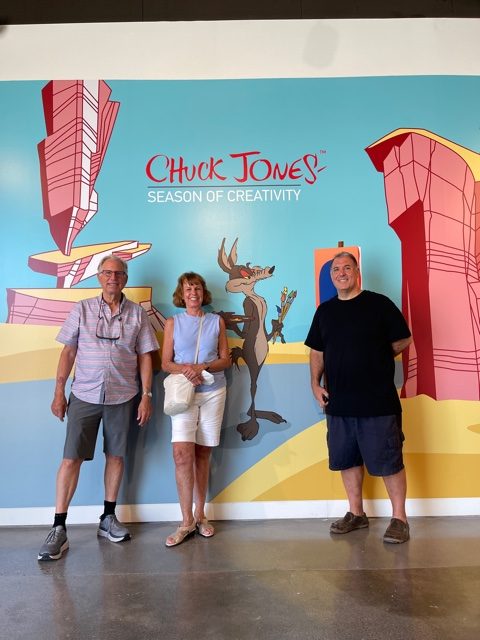
Mark Hilbert of the Hilbert Museum of California Art, Paul Bussolini, animation art collector, and Liz Goldner at the Great Park Gallery.
(Photo courtesy of Liz Goldner)
Advertising disclosure: We may receive compensation for some of the links in our stories. Thank you for supporting Irvine Weekly and our advertisers.

